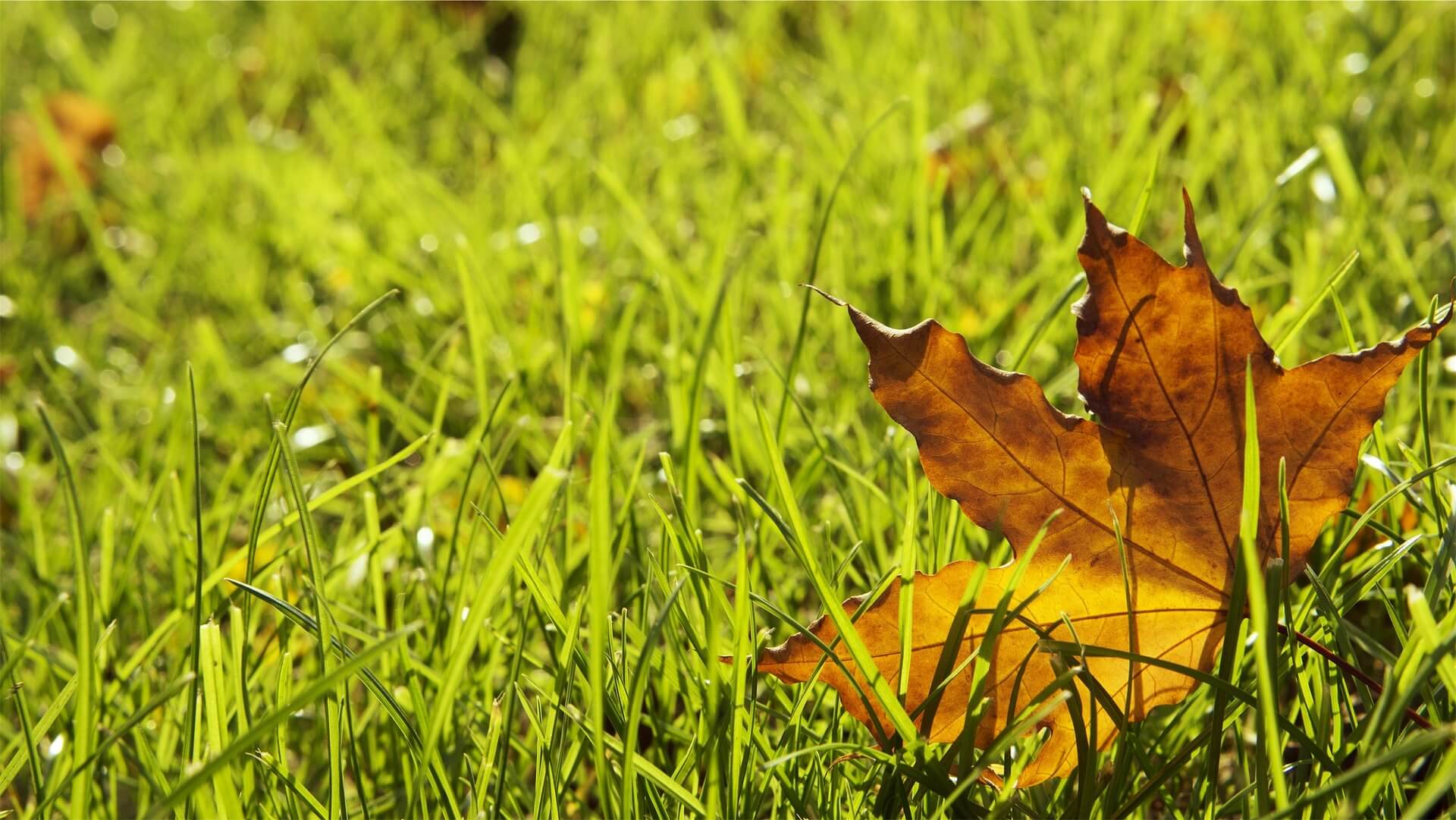
Fall is around the corner and soon we can say good riddance to intense summer heat. As the season changes, your Atlanta lawn care routine should, too. Follow these tips to help your lawn recover from summer stresses and stay healthy and beautiful throughout the fall.
1. Aerate and Overseed Fescue by the End of October
Heat stress can cause cool-season Fescue lawns to thin out. You might even have some spots that are completely bare. A fall combination of aeration and overseeding is the only way to correct this.
Aeration loosens up heat-baked soil, allowing water, air, and nutrients to travel down to the root system. It is also the perfect soil preparation for overseeding, which is simply spreading new Fescue seeds over your existing lawn. Fescue doesn’t self-spread like many other grasses, so it needs to be overseeded to fill in thinning and bare patches.
To give new Fescue grass enough time to get established before winter, aeration and overseeding should be done in September or October.
2. Ease Off of Late Afternoon Watering as Days Shorten
Efficient, effective watering is a balancing act between absorption and evaporation. You want the soil to soak up as much water as possible before it evaporates. At the same time, you want excess moisture on the grass itself to evaporate quickly enough to avoid fungal diseases.
During the summer, watering between 4 and 6 pm strikes a good balance. However, as the sun sets earlier in the fall (and the temperatures are cooler), it’s a good idea to avoid watering much past 4 pm. And no matter the season, the absolute best time to water is always in the morning by 10 am.
3. Don’t Let Leaves Pile Up on the Lawn
A thick layer of leaves is no good for your lawn. It blocks out sunlight, restricts airflow, and encourages fungal diseases by keeping grass blades excessively wet. And if you use a lawn care service, they won’t be able to treat your lawn if it’s covered with leaves when they show up.
You don’t have to patrol your lawn constantly to remove every last leaf in order to keep it healthy or to allow lawn fertilization to be effective. The goal is simply to avoid heavy leaf buildup.
4. Put Fallen Leaves to Good Use
Dead leaves are a rich source of nutrients that benefit the soil, the plants that grow in it, and the organisms, like earthworms and soil microbes, that live in it. The last thing you want to do is put leaves in the trash headed for a landfill, where they produce harmful methane gas.
Instead, use them to start a compost pile or add them to one you’ve already got going. Small leaves and shredded bigger leaves also make excellent mulch. A 3-inch layer in flower beds, vegetable gardens, and around the bases of trees and shrubs will inhibit weeds while insulating soil and helping it to retain moisture. Plus, as the leaf mulch breaks down over time, it nourishes the grass – naturally.
For more natural and organic lawn care know-how, visit our blog.

